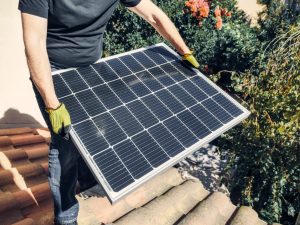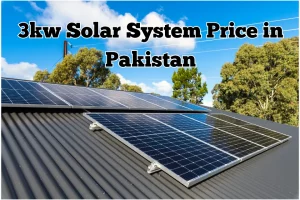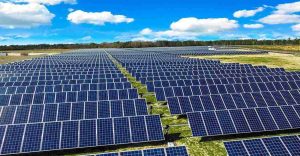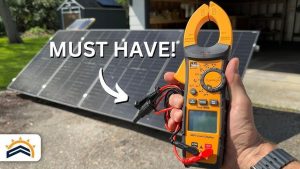What is a Solar Power Inverter?

What is a Solar Power Inverter?
What is a Solar Power Inverter?
Solar power a renewable and ecofriendly energy source has gained immense popularity in recent years. Among the crucial components of a solar energy system the solar power inverter plays a pivotal role. Let delve into the details of what a solar power inverter is and why it is an indispensable part of harnessing solar power efficiently.
Understanding Solar Power Inverters
Definition and Role in Solar Energy Systems
At its core a solar power inverter is a device that converts the direct current DC generated by solar panels into alternating current AC which is the usable form of electricity for homes and businesses. In a solar energy system the inverter acts as a bridge ensuring that the electricity produced by the solar panels is compatible with the electrical grid.
Types of Solar Power Inverters
Solar power inverters come in various types each designed for specific applications. String inverters microinverters and power optimizers are among the common types. Understanding the differences and choosing the right type is crucial for optimizing the performance of a solar energy system.
How Solar Power Inverters Work
Conversion of DC to AC
The primary function of a solar power inverter is to convert the direct current produced by solar panels into alternating current. This transformation is essential because most household appliances and the electrical grid operate on AC power. The inverter ensures seamless integration making solar energy usable in our daily lives.
Importance of Waveform Inverter
Not all inverters are created equal. The waveform produced by an inverter can significantly impact the performance of connected devices. Pure sine wave inverters are preferred for their ability to replicate the clean and stable waveform of grid electricity ensuring the smooth operation of sensitive electronics.
Key Components of Solar Power Inverters
Input and Output Terminals
Solar power inverters have input terminals to connect to solar panels and output terminals for connecting to the electrical grid or batteries. Understanding these terminals is essential during installation and maintenance.
Control Circuits and Monitoring Systems
Modern inverters come equipped with sophisticated control circuits and monitoring systems. These components play a crucial role in optimizing energy production ensuring the longevity of the inverter and providing realtime data on energy generation and consumption.
Choosing the Right Solar Power Inverter
Consideration of Solar Panel Capacity
The capacity of your solar panels should align with the inverter capacity to ensure optimal performance. Mismatched capacities can lead to inefficient energy conversion and potential damage to the inverter.
Matching Inverter to Battery Storage
For those with battery storage systems it essential to choose an inverter compatible with the battery technology used. This compatibility ensures seamless energy storage and distribution.
Installation Process
Installing a solar power inverter is a crucial step in setting up a solar energy system. While it recommended to hire a professional for installation understanding the basic steps and safety measures is valuable for homeowners.
Basic Steps for Installing Solar Power Inverters
- Mounting the inverter in a wellventilated area.
- Connecting the inverter to the solar panels and electrical grid.
- Ensuring proper grounding for safety.
- Configuring settings for optimal performance.
Safety Measures During Installation
Safety should always be a priority during installation. Turning off the solar panels and the electrical grid using appropriate safety gear and following the manufacturer guidelines are essential precautions.
Maintenance of Solar Power Inverters
To ensure the longevity and efficiency of solar power inverters regular maintenance is crucial. Implementing routine checks and inspections can identify issues early on preventing potential downtime and costly repairs.
Regular Checks and Inspections
Periodically inspecting the inverter for physical damage loose connections and signs of wear is vital. Regularly cleaning the inverter and the surrounding area from dust and debris also contributes to optimal performance.
Troubleshooting Common Issues
Being familiar with common issues such as overloading short circuits and inverter failure allows homeowners to troubleshoot minor problems or seek professional assistance promptly.
Advantages of Solar Power Inverters
Energy Efficiency
Solar power inverters enhance the overall energy efficiency of a solar energy system. By converting DC to AC with minimal losses these devices ensure that a higher percentage of the generated solar power is usable.
Contribution to a Sustainable Environment
The adoption of solar power facilitated by inverters contributes to a sustainable and environmentally friendly energy landscape. Reduced reliance on fossil fuels and lower carbon emissions are among the significant benefits.
Challenges and Solutions
Common Challenges in Solar Power Inverter Systems
Despite their advantages solar power inverters face challenges such as voltage fluctuations weatherrelated issues and compatibility concerns. Addressing these challenges is essential for maximizing the benefits of solar energy.
Solutions and Innovations in the Industry
The solar power industry is dynamic with ongoing innovations to address challenges. Smart inverters advanced monitoring systems and improved grid integration are among the solutions shaping the future of solar power.
Future Trends in Solar Power Inverters
Advancements in Technology
As technology advances solar power inverters are becoming more efficient compact and intelligent. Integration with smart home systems allows for better energy management and optimization.
Integration with Smart Home Systems
The future holds exciting possibilities for solar power inverters with increased integration into smart home systems. This integration enables homeowners to monitor and control their energy usage more effectively.
Impact on Renewable Energy
Role of Solar Power Inverters in the Growth of Renewable Energy
Solar power inverters play a crucial role in the widespread adoption of solar energy contributing to the global shift towards renewable energy sources. Their impact extends beyond individual households to influence energy policies and initiatives.
Global Initiatives and Policies Supporting Solar Power
Governments worldwide are recognizing the importance of solar energy and implementing policies to encourage its adoption. Incentives subsidies and favorable regulations are driving the growth of solar power with inverters at the forefront.
Case Studies
Successful Applications of Solar Power Inverters
Realworld examples showcase the effectiveness of solar power inverters. From residential installations to largescale commercial projects these case studies highlight the reliability and efficiency of solar energy systems.
Realworld Examples of Efficiency and Benefits
Examining specific cases where solar power inverters have positively impacted energy production cost savings and environmental sustainability provides valuable insights for prospective solar adopters.
Cost Considerations
Initial Investment vs. Longterm Savings
While the initial investment in solar power systems and inverters may seem significant the longterm savings in energy bills and potential government incentives make it a financially viable and environmentally responsible choice.
Government Incentives and Subsidies
Many governments offer incentives and subsidies to promote the adoption of solar power. Understanding and taking advantage of these programs can significantly offset the initial costs of installing solar power inverters.
Consumer Experiences
Reviews and Testimonials from Users
Listening to the experiences of homeowners who have installed solar power inverters provides valuable insights. Reviews and testimonials offer a realworld perspective on the performance durability and overall satisfaction with solar energy systems.
Common Misconceptions About Solar Power Inverters
Addressing misconceptions such as high maintenance costs complicated installation processes or limited efficiency helps potential adopters make informed decisions and embrace the benefits of solar power.
Final Word
In a solar power inverter is a crucial component in the world of renewable energy. Its role in converting solar energy into usable electricity coupled with advancements in technology and government support positions solar power inverters as key players in the global transition to cleaner and sustainable energy sources. As we continue to witness innovations in the industry the future looks bright for solar power and the integral role played by inverters.
FAQs Frequently Asked Questions
- Are solar power inverters compatible with all types of solar panels?
- Solar power inverters are designed to be compatible with various types of solar panels. However it essential to check the specifications to ensure a proper match.
- Can I install a solar power inverter myself or should I hire a professional?
- While some individuals may have the expertise to install a solar power inverter it generally recommended to hire a professional to ensure a safe and efficient installation.
- What maintenance tasks should I perform on my solar power inverter regularly?
- Regular tasks include visual inspections for damage cleaning the inverter and surrounding area and checking for loose connections. Refer to the manufacturer guidelines for specific recommendations.
- Do solar power inverters work during cloudy days or at night?
- Solar power inverters rely on sunlight to generate electricity so their efficiency is reduced during cloudy days or at night. However battery storage systems can help provide power during periods of low sunlight.
- How do government incentives and subsidies make solar power inverters more affordable?
- Government incentives and subsidies can significantly reduce the upfront costs of installing solar power inverters making renewable energy more accessible to homeowners and businesses.







